Exploring Natural History on Whidbey Island
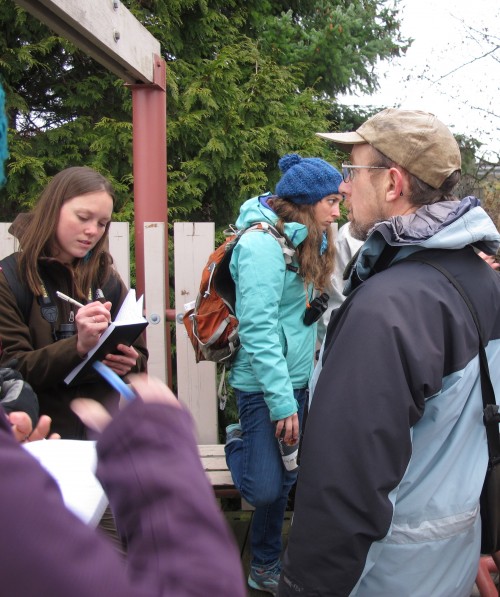
Three times during their year-long residency, the graduate students at the Learning Center venture outside for three days to learn about natural history. Our winter natural history retreat started on a cold January morning. Leaving the Learning Center at 7:30am, we drove to Ebey’s Landing National Historic Reserve on Whidbey Island to learn about its history from Craig Holmquist, Operations Manager for the reserve. That evening, after exploring the beach and settling into Camp Casey, we had a presentation about the history of the Upper Skagit Native Americans by Molly Malone, a PhD Student in Anthropology.
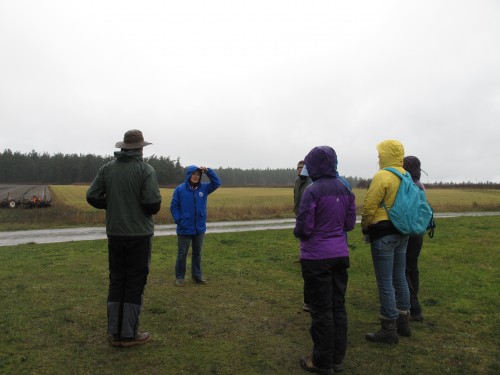 Learning some history of the Ebey family before walking to Jacob Ebey’s house. Photo by the author
Learning some history of the Ebey family before walking to Jacob Ebey’s house. Photo by the author
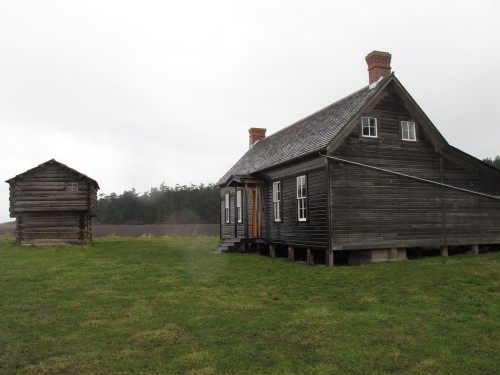 Jacob Ebey’s house (on right) and the blockhouse (on left) where people hid from Native Americans during periods of unrest in the 1800s. Photo by the author
Jacob Ebey’s house (on right) and the blockhouse (on left) where people hid from Native Americans during periods of unrest in the 1800s. Photo by the author
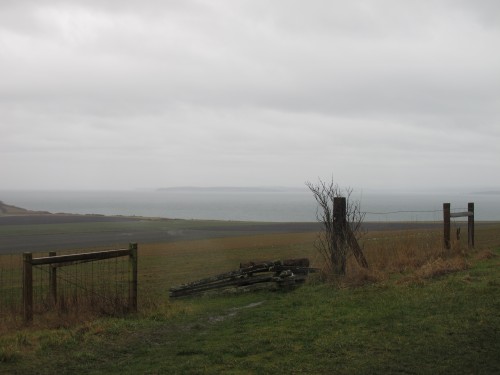 Prairie and farmland at Ebey’s Landing on a grey and misty day. Photo by the author
Prairie and farmland at Ebey’s Landing on a grey and misty day. Photo by the author
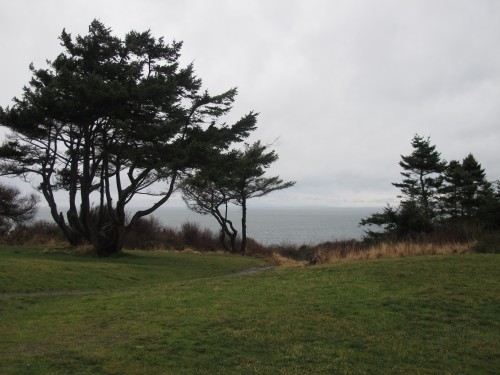 Heading to the beach, after arriving at Camp Casey. Photo by the author
Heading to the beach, after arriving at Camp Casey. Photo by the author
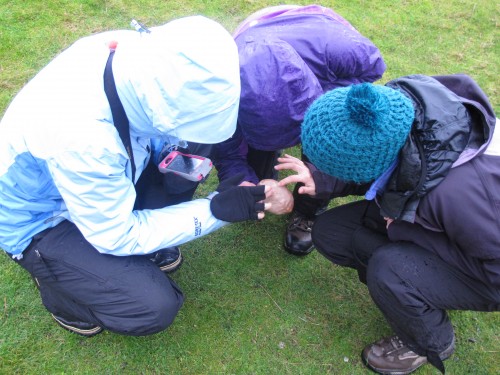 Just past the lighthouse, on our way to the beach we found an unidentified sea creature. It was slimy and gross…so we all had to touch it. What is it? Photo by the author
Just past the lighthouse, on our way to the beach we found an unidentified sea creature. It was slimy and gross…so we all had to touch it. What is it? Photo by the author
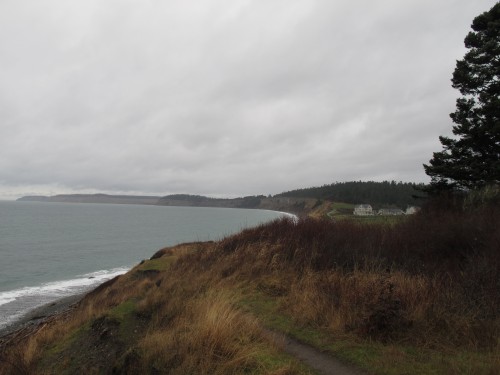 On the bluff, before navigating the steep, narrow trail. Photo by the author
On the bluff, before navigating the steep, narrow trail. Photo by the author
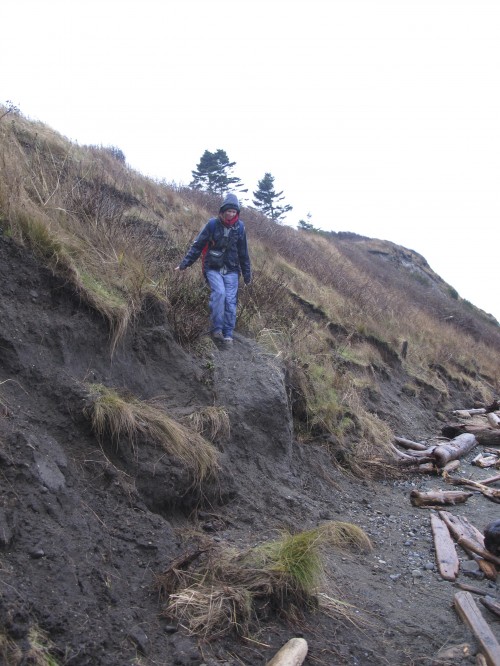 Almost there! Photo by the author
Almost there! Photo by the author
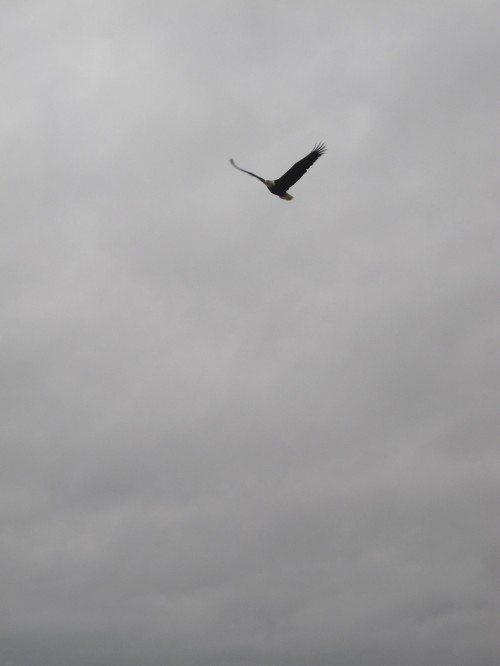 The first eagle of our trip! It flew directly over us. Photo by the author
The first eagle of our trip! It flew directly over us. Photo by the author
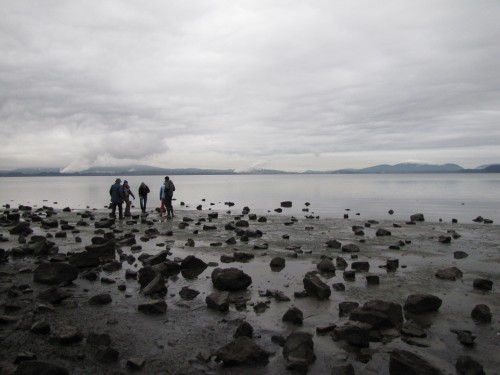 Finding and looking at rocks and shells. Photo by Cait McHugh
Finding and looking at rocks and shells. Photo by Cait McHugh
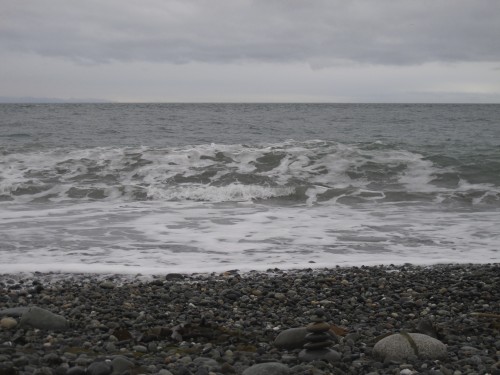 We made a cairn…can you find it? Photo by the author
We made a cairn…can you find it? Photo by the author
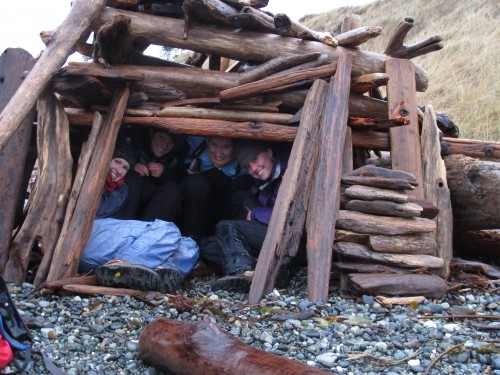 Cohort 12 graduate students Cait, Liza, Lindsay, and Hillary crowd into a driftwood house we found. Photo by the author
Cohort 12 graduate students Cait, Liza, Lindsay, and Hillary crowd into a driftwood house we found. Photo by the author
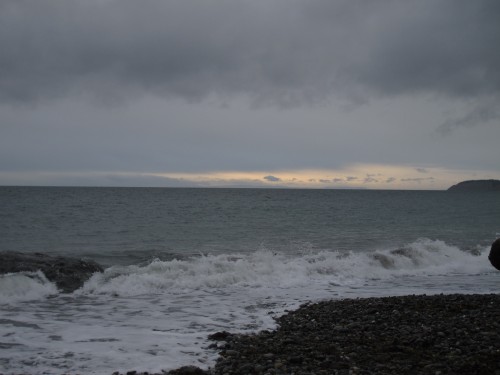 As the sun began to set, we headed back to the warmth of our weekend home at Camp Casey. Photo by the author
As the sun began to set, we headed back to the warmth of our weekend home at Camp Casey. Photo by the author
Day two began cool and cloudy, but dry, as we headed out to Padilla Bay Natural Estuarine Research Reserve. There we met up with some friends of the Institute to have a day of birding on the Skagit and Samish flats. At the end of the day, our bird list included: American Robin, Song Sparrow, Fox Sparrow, Buffleheads, Common Loons, Mallards, Glaucous-winged gulls, Scaup, adult and immature Bald Eagles, Red-tailed Hawks, Northern Harriers, Rough-legged Hawks, Great Blue Herons, Widgins, Snow Geese, Red-winged Blackbird, Peregrin Falcon, Ravens, Green-winged Teals, Common Goldeneyes, and the stars of day…two Short-eared Owls and three Snowy Owls!
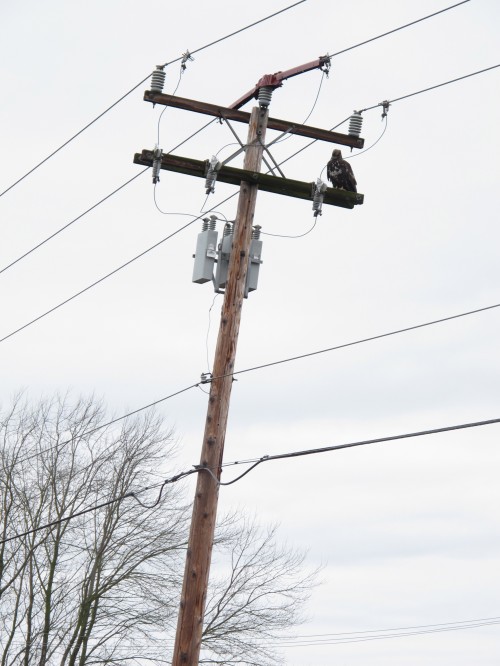 This immature Bald Eagle didn’t seem to notice us, let along care that we were walk around right below it. Photo by the author
This immature Bald Eagle didn’t seem to notice us, let along care that we were walk around right below it. Photo by the author
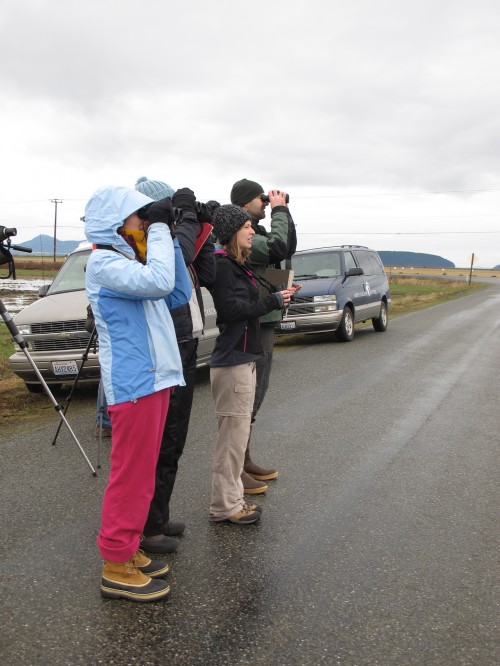 The “bird nerds”: Lindsay, Kim, Cait, and Jeff. Photo by the author
The “bird nerds”: Lindsay, Kim, Cait, and Jeff. Photo by the author
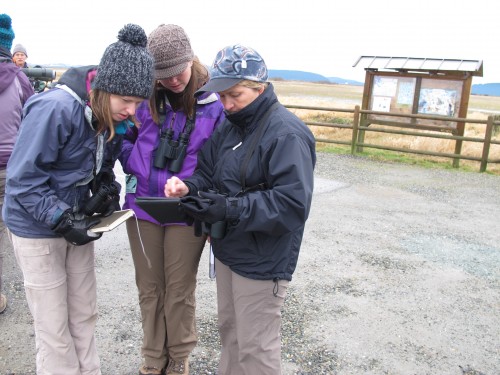 Cait and Hillary, learning about a raptor they just saw from Irene Perry and the help of the iPad. Photo by the author
Cait and Hillary, learning about a raptor they just saw from Irene Perry and the help of the iPad. Photo by the author
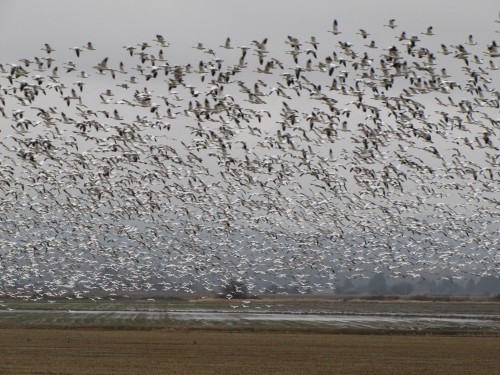 Snow geese by the thousands! Photo by Cait McHugh
Snow geese by the thousands! Photo by Cait McHugh
Our last day came almost too quickly, though with everything on our plate as graduate students and some deadlines fast approaching, I know I wasn’t the only one to be a tiny bit glad about being able to devote my time to working on our projects again. We spent the morning wandering the beach and then the woods, both at Deception Pass State Park. We were practicing “reading the landscape.” What’s living here? What is its role in the ecosystem? What was here before?
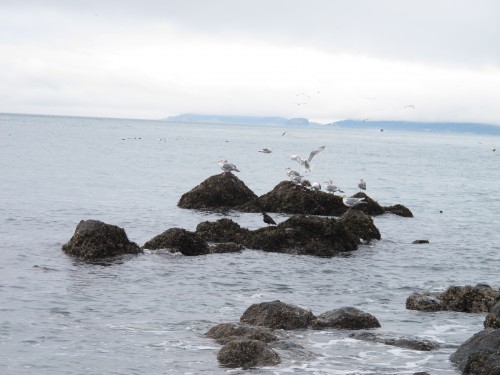 Two Oyster Catchers hanging out on the rocks with some gulls at Deception Pass State Park. Photo by the author
Two Oyster Catchers hanging out on the rocks with some gulls at Deception Pass State Park. Photo by the author
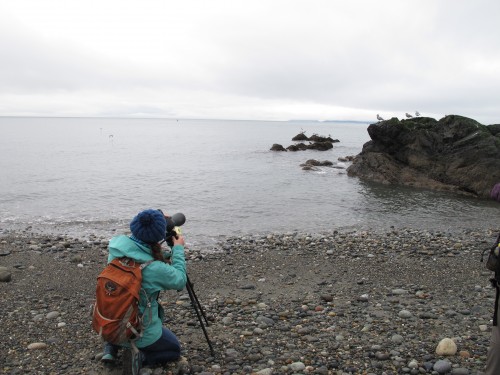 Our Graduate Coordinator, Steph Bennett, observing the Oyster Catchers through a spotting scope. Photo by the author
Our Graduate Coordinator, Steph Bennett, observing the Oyster Catchers through a spotting scope. Photo by the author
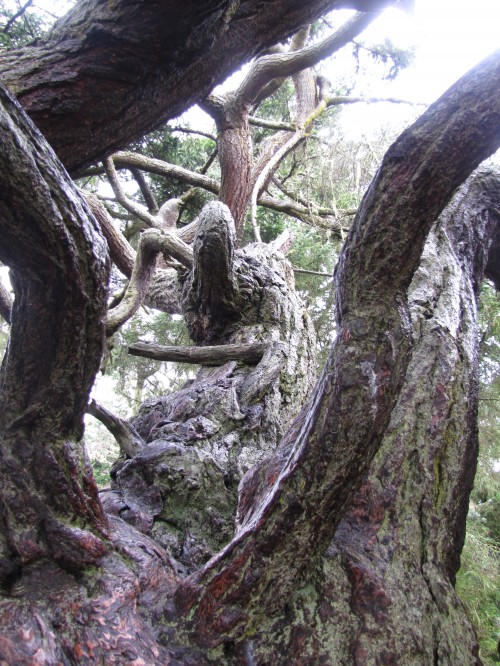 A gnarled 850 year old Douglas Fir tree at Deception Pass State Park. We also found two Rough-skinned newts at its base. Photo by Cait McHugh
A gnarled 850 year old Douglas Fir tree at Deception Pass State Park. We also found two Rough-skinned newts at its base. Photo by Cait McHugh
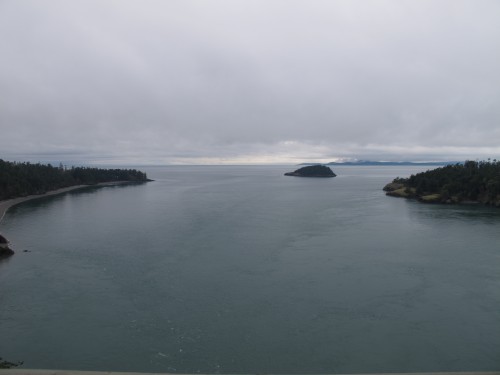 (above two photos) Looking over the bridge at Deception Pass. Photos by the author
(above two photos) Looking over the bridge at Deception Pass. Photos by the author
Driving home, we were all tired and happy and ready for our next adventures…
Leading photo: We got a brief “intro to birding” lesson at Padilla Bay before heading out to the Flats. Photo by the author
Ryan Weisberg is a graduate student in his third quarter of North Cascades Institute and Western Washington University’s M.Ed. program. He grew up here in Washington, exploring the natural areas around Bellingham and in the Cascades. Ryan is the Chattermarks editor this year during his residency at the North Cascades Environmental Learning Center.


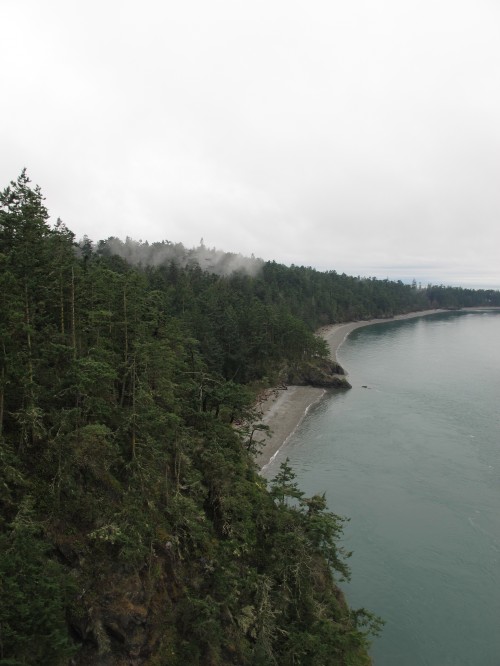
Ryan, great photo essay! You capture the essence of the trip and the place really well. You are all becoming quite the essayists, photo and other. Very impressive. Wish I could have joined you.